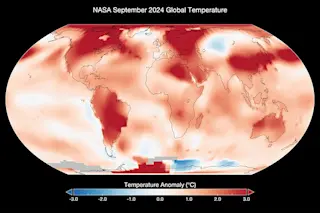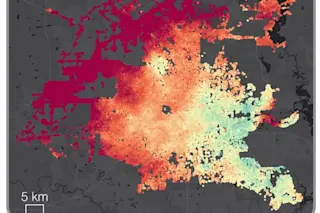After an unprecedented streak of 15 straight months of global heating records, the planet finally caught a tiny break: September did not go down as yet another record-shatterer.
Even so, it was still the second-warmest September in records dating back to 1880. And today, the United Nations released a report saying a huge gap remains between what countries have pledged to do to limit further global heating, and what they've actually done.
After August continued the string of record-warm months, September finally seems to have ushered in a modest change. By NASA's reckoning, Earth's average surface temperature was 1.26 degrees C, or about 2.27 degrees F, above the long-term 1951-1980 average for the month. That's down several tenths of a degree from September of 2023's record-shattering mark.
Here is how September temperatures have varied from the long-term average dating back to the beginning of NASA's record in 1880. As the ...














